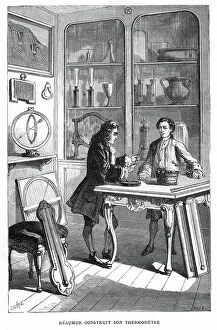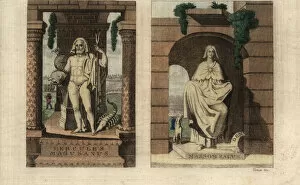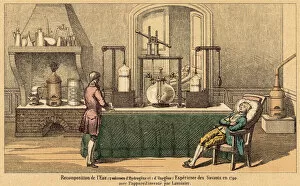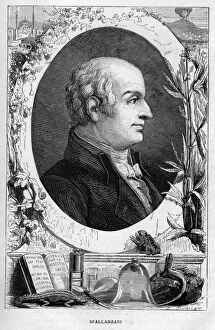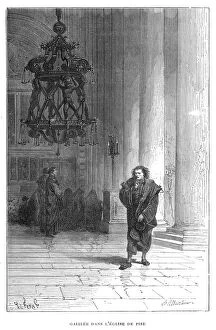Savants Collection
"Savants: Unveiling the Minds of Extraordinary Thinkers" In this captivating collection of images
All Professionally Made to Order for Quick Shipping
"Savants: Unveiling the Minds of Extraordinary Thinkers" In this captivating collection of images, we embark on a journey through time and space to explore the fascinating world of savants. From Napoleon Bonaparte's encounter with the savants in Egypt to the mythical gods Thor and Nehalennia, these glimpses into history shed light on the enigmatic brilliance that defines these exceptional individuals. The vibrant lithograph depicting Bonaparte surrounded by savants in Egypt transports us back to a pivotal moment where knowledge was sought amidst ancient ruins. It serves as a testament to their insatiable thirst for understanding and discovery. As we delve further into this mosaic, we encounter another colorful litho portraying water recomposition - H2O. This scientific marvel reminds us of how savants like Pierre de Fermat and Nicholas Lemery revolutionized our understanding of chemistry and mathematics during their respective eras. Wood engraving brings forth Les Chiens Savants, an intriguing artwork by Daniel Vierge that showcases not only his artistic prowess but also highlights how even animals can possess extraordinary talents under certain circumstances. Pythagoras stands tall alongside Egyptian priests in one image, symbolizing his profound impact on mathematics and philosophy. Euclid's presence at Alexandrian school reinforces his status as one of history's greatest mathematicians whose teachings continue to shape our understanding today. Moving forward through time, we witness Louis XIV engaging Italian astronomer at Paris Observatory – an emblematic moment showcasing how monarchs recognized the importance of scientific exploration during their reigns. Jean Baptiste von Helmont's inclusion emphasizes his contributions as both physician and chemist while Lazzaro Spallanzani's work on bacteria disproved prevailing theories about spontaneous generation – forever altering our perception of life itself. These snapshots from various epochs remind us that throughout history, they have been instrumental in pushing boundaries, challenging conventions, and unraveling mysteries that surround us.





